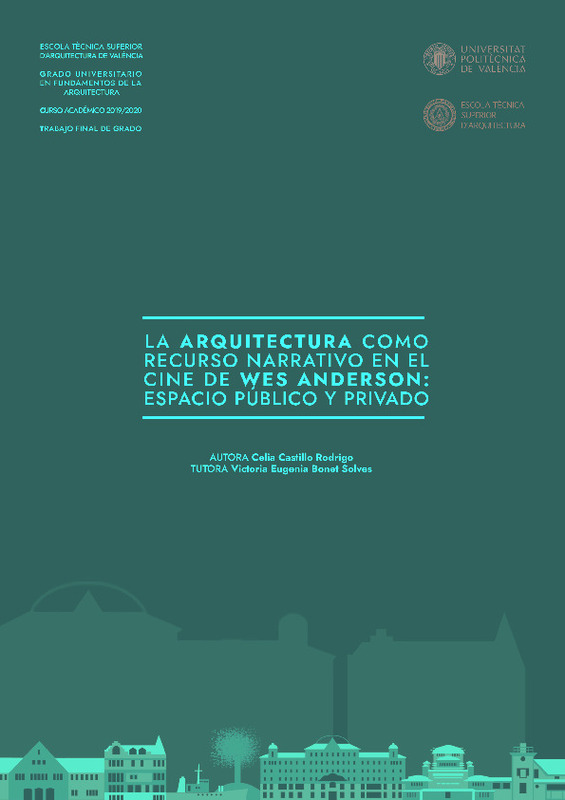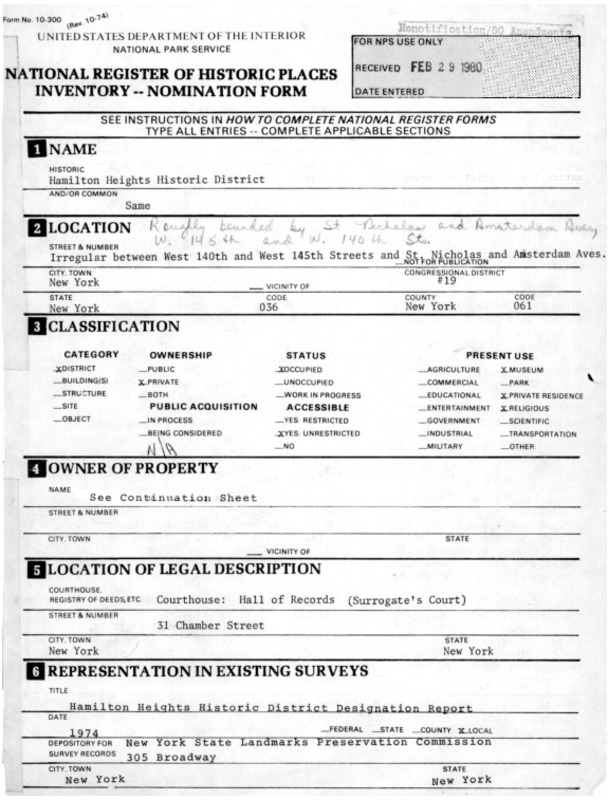JavaScript is disabled for your browser. Some features of this site may not work without it.
Buscar en RiuNet
Listar
Mi cuenta
Estadísticas
Ayuda RiuNet
Admin. UPV
CPA-F0257 La arquitectura como recurso narrativo en el cine de Wes Anderson: espacio público y privado
Mostrar el registro sencillo del ítem
Ficheros en el ítem
| dc.contributor.advisor | Bonet Solves, Victoria Eugenia
|
es_ES |
| dc.contributor.author | Castillo Rodrigo, Celia
|
es_ES |
| dc.date.accessioned | 2021-01-12T13:49:27Z | |
| dc.date.available | 2021-01-12T13:49:27Z | |
| dc.date.created | 2020-07-17 | |
| dc.date.issued | 2021-01-12 | es_ES |
| dc.identifier.uri | http://hdl.handle.net/10251/158756 | |
| dc.description.abstract | [ES] En palabras de la RAE, la arquitectura es el «arte de proyectar y construir edificios», pero no especifica la funcionalidad de dichos edificios. Si uno nada superficialmente en estas cinco palabras, asumirá que esas construcciones hacen referencia a la arquitectura conocida, la que se puede encontrar en una ciudad: casas, escuelas, hospitales¿ Pero si navega profundamente, descubrirá que esos edificios también pueden aludir a la escenografía de una película o de una obra teatral. No obstante, la relación entre cine y arquitectura va más allá de la aparición de ciertas construcciones en los planos de un largometraje. La arquitectura es una herramienta narrativa que según el tratamiento que se le dé puede mejorar la definición y completar la información de los personajes que los actores ofrecen con las interpretaciones de los mismos. Además, tiene la capacidad de ayudar al espectador a ubicarlos en una época concreta. En este trabajo se pretende analizar el rol de la arquitectura en dos películas del cineasta Wes Anderson: "Los Tenenbaums. Una familia de genios" (2001) y "El gran hotel Budapest" (2014); la primera como representación de un espacio privado y la segunda, de un espacio público. Se estudiará el aspecto tanto exterior como interior de dichos espacios y posteriormente se examinará la función que realizan dentro de ambos largometrajes como recursos narrativos. | es_ES |
| dc.description.abstract | [EN] The dictionary of the Spanish Royal Academy of Language defines architecture as «the art of projecting and building buildings» but this description does not explain the function of these constructions. If we do not get deeper into those five words, we will assume that the buildings refer to the architecture we know: houses, schools, hospitals that we could find in our city or just by travelling. But if we spend more time meditating about the description, we will find out that those buildings can also refer to a film or theatre play scenography. However, the relationship between cinema and architecture goes beyond the vision of buildings at the bottom of the film scenes. Architecture is a narrative tool that improves the definition and completes the information of the characters, who are played by actors and actresses. Besides, it is also useful to identify which history era is the film about. The focus of this essay is to analyse the role of architecture in two films of Wes Anderson: "The Royal Tenenbaums" (2001) and "The Grand Budapest Hotel" (2014); the first one as a representation of a private space and the second one as a public space. This essay will study the composition of the outdoor and indoor spaces and later, it will be analysed which function have them in both motion pictures as narrative tools. | es_ES |
| dc.format.extent | 140 | es_ES |
| dc.language | Español | es_ES |
| dc.publisher | Universitat Politècnica de València | es_ES |
| dc.rights | Reconocimiento - No comercial - Sin obra derivada (by-nc-nd) | es_ES |
| dc.subject | Wes Anderson | es_ES |
| dc.subject | Dirección artística | es_ES |
| dc.subject | Artificiosidad | es_ES |
| dc.subject | Personaje | es_ES |
| dc.subject | Art direction | es_ES |
| dc.subject | House | es_ES |
| dc.subject | Artificiality | es_ES |
| dc.subject | Character | es_ES |
| dc.subject | Space | es_ES |
| dc.subject | Casas | es_ES |
| dc.subject | Hoteles | es_ES |
| dc.subject | Espacios | es_ES |
| dc.subject | Escenografía | es_ES |
| dc.subject | Arquitectura en el cine | es_ES |
| dc.subject.classification | COMPOSICION ARQUITECTONICA | es_ES |
| dc.subject.other | Grado en Fundamentos de la Arquitectura-Grau en Fonaments de l'Arquitectura | es_ES |
| dc.title | CPA-F0257 La arquitectura como recurso narrativo en el cine de Wes Anderson: espacio público y privado | es_ES |
| dc.type | Proyecto/Trabajo fin de carrera/grado | es_ES |
| dc.rights.accessRights | Abierto | es_ES |
| dc.description.bibliographicCitation | Castillo Rodrigo, C. (2020). CPA-F0257 La arquitectura como recurso narrativo en el cine de Wes Anderson: espacio público y privado. Universitat Politècnica de València. http://hdl.handle.net/10251/158756 | es_ES |
| dc.description.accrualMethod | TFGM | es_ES |
| dc.relation.pasarela | TFGM\82950 | es_ES |
Este ítem aparece en la(s) siguiente(s) colección(ones)
-
ETSA - Trabajos académicos [4687]
Escuela Técnica Superior de Arquitectura







